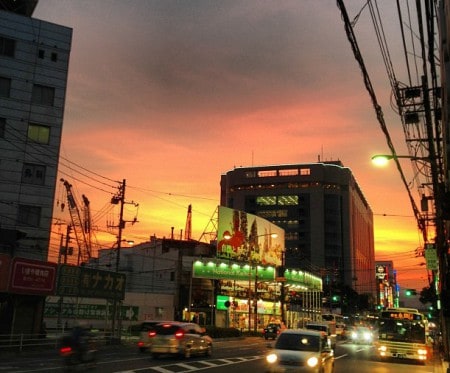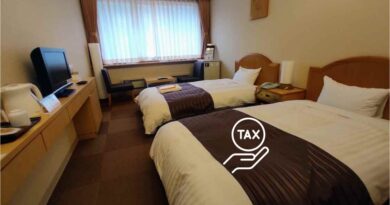How International Tourists View Hiroshima
While preparing for an upcoming talk at a “Hello Hiroshima” volunteer guide seminar (HiroshiaJinDai sponsored) this week I’ve been considering how we can make a visit to Hiroshima more user-friendly. As it has been many years since I visited Hiroshima for the first time, I asked friends on facebook and twitter for insights on any problems they had when first coming to Hiroshima.
It became clear that when you can’t read anything in Japanese and you don’t know the culture, visiting Hiroshima for the first time is a very confusing place to be.
Upon arrival at the Shinkansen station, you are greeted by a blur of signs and confusing information in English. One visitor said the only sign she noticed was the “YouMe” sign which didn’t help her much (YouMe is the name of a department store chain in Hiroshima).
So, here I did a basic edit below. I added extra signs on top that I think English reading tourists would be happy to see upon arrival. Basically, North and South exit (or numbers as in many stations) have no meaning for new arrivals. They want to know 1.Where is the city center? 2.Where can I change money? 3.Where can I get more information? 4. What’s at the other exit? 5. Where is the toilet?
Toilet information is always on a traveler’s mind, especially if traveling with young children, so adding information about changing tables and handicap facilities (“Barrier free” in Japan) is very useful too.
Ideally, adding small pictures and icons for this information would make it more user-friendly too, this might negate a need to add multiple translations on signs as they are doing in Tokyo in preparation for the 2020 Olympics. I’m not sure how practical it is to add 6 languages to all signage and statistics show that the largest numbers of foreign visitors to Hiroshima can read English. So, creating clear signs in basic English with icons and pictures would be a great first step.
Have you seen the “Hello Hiroshima” volunteers in the station? This is a new project started by Hiroshima city and Hiroshima-jin-daigaku to add extra assistance (in English) to visitors in Hiroshima station. I hope they add a “English OK” badge to their jerseys or “Welcome to Hiroshima” might be more clear perhaps, but it’s a fantastic idea and I hope it helps many visitors feel more welcome and find the information they need.
When talking of frustrations that tourists have when visiting Japan, the #1 is food and drink. Talk about “mottai-nai” もったいない (What a waste!) since Hiroshima, like most of Japan, has absolutely fantastic food that should be one of the reasons people love visiting us. However, if you can’t read Japanese, this is difficult.
Heard a story of a family who visits Hiroshima and goes to a Carp game and buys a bunch of drinks and foods a the convenience store before the game. The kids started drinking what looks like apple juice, but soon realised it was alcoholic. It turns out it is Chu-hai. Another person on twitter reports that she drank what she thought was juice for a few days and just thought her jetlag was bad, but turns out she was slightly drunk drinking Chu-hai without knowing it was alcoholic. I hope Kirin and Asahi and other major chu-hai brands start putting an icon on alcoholic beverages, this is very misleading. Perhaps the お酒 (O-Sake) Kanji in yellow could have “ALCOHOL” written under it or “No Under 20’s” like I have seen on anti-youth drinking posters.
Met two young travellers who wanted to buy something cheap for lunch and I suggested they buy おにぎり rice balls- cheap, fast, kind of healthy and available anywhere. But they came back with donuts and sweet cakes instead. Why? They said (of course) that they couldn’t read any of the labels for the rice balls and since they are both vegetarians it seemed like a risk to choose at random. This is very true. If we could add separated sections of rice balls and bento with clear icons: a pig, cow, fish, vegetable in stores this would make it much more user-friendly for visitors.
The last story is quite unbelievable, but I happened to talk to this family myself. I was near Tully’s in the city center when I noticed a family around a drink machine discussing how “salty and very unusual” something they were drinking was. When I looked closely they were in front of the だし(dashi) soup stock machine and had bought one of the bottles thinking it was a special drink of the area. I explained that it was soup stock and they were really surprised as to why it is sold in a “drink machine” in “drink bottles” next to other drink machines. I agreed it was very confusing indeed!
When I tweeted about this story, a Hiroshima local @naohiko7 replied : @jjwalsh I have sent message in Japanese to the DASHI company about it just now. I suggest that they show signs. dashidouraku.com
I love Hiroshima people, the exchange above is another great example of how helpful most people are here. I was so impressed by his quick response to help clarify this issue, I hope they take his advice. Until then, when you are choosing a drink, avoid any that have a flying fish on it and look out for the ALC 5% or 3% on drinks that may look like juice but are likely Chu-hai (Japanese style cocktails). When buying rice balls, sandwiches, bento (Japanese box lunches) or other foods, I suggest asking shop staff about the ingredients.
In terms of food allergies and stating eating preferences, here is the information from the article “What’s the deal with eating out that we originally published in the 2014 Summer edition of the GetHiroshima Magazine (p.56)
Listing the things below that you can’t eat, say this sentence while crossing your fingers in front of you as an “X” helps communicate it is a no-go!
“~~ taberu koto ga dekimasen” = “I can’t eat ~~”
“I have an allergy to ~~” = “~~ allelurgi ga arimasu”
Meat = niku / Fish = sakana / Pork, ham, bacon = Buta-niku, Hammu, Beykon / Wheat = Komugi / Nuts = nattsu / Eggs = tamago / Seafood = kaisanbutsu / Dairy = nyuseihin / Soy = daizu
There are some cases where what you buy or order still has the ingredient you asked for it not to have in it- this is a problem in Japan as allergies and food aversions and preferences is still new territory. I might need to consult experts in order to find allergy treatments for dry throat. As a vegetarian, I have had many cases where despite saying everything clearly, my food still comes with slices of bacon or ham on it as those are often considered garnish in Japan, not necessarily meat.
On a positive note, I have noticed that more restaurants than before are now taking this very seriously and double check on the information to make sure they got it right- aah progress!!
Please send us your stories and comments about visiting Hiroshima. By passing on these stories to Hiroshima planners, volunteers and tourist offices, it will hopefully make it an even better place to visit and live whether you can read Japanese or not.
Comments on Facebook:
- It has been many years since I first visited Hiroshima as a tourist, but the one thing that sticks out in my memory is trying to get to the south side of the station from the Shinkansen. I ended up coming out on the north end, and I wandered around for ages before noticing that there was an underpass! I didn’t even realize that you could exit the shink from the south side until after I lived there for a couple years.
- Isn’t the tourist info office still hidden underground with no clear signage from the platform exits? An easy to find tourist info. desk with, at least, literature in English would probably go a long way…
- Better signs, Better signs and Better Signs!! Also they need to be consistent and the same font and colouring! but….When are they going to take this serious!? Some time ago I was on TV for just this…I also mentioned the underpass signs! lol










